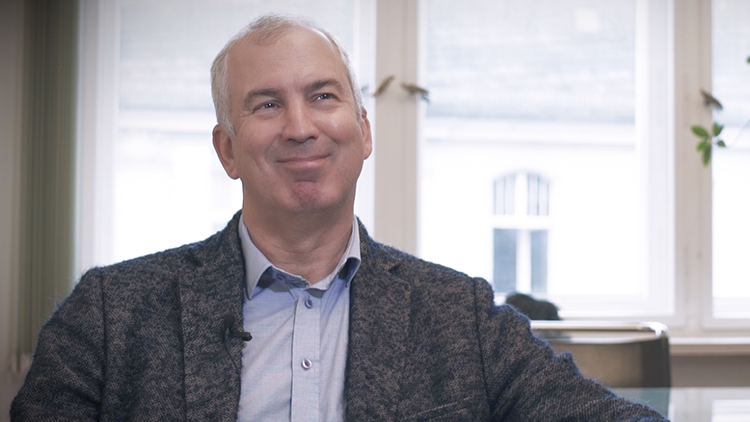Eran Davidson, a 20-year veteran of the venture capital industry, is almost reticent to talk about his new venture.
From the oftentimes flashy world of venture capital, he has moved into a rather less center-stage sector of the investment world, one that is seldom in the news or on social media. It is for a reason, he jokes.
“This is why none of my colleagues in this space makes much fuss about it,” he quips. “If it so good, why share it?”
The erstwhile head of Hasso Plattner Ventures, and a speaker at the London NOAH conference, is heading up his own fund, Davidson Technology Growth Debt. For Davidson, the time is ripe for Europe to embrace a source of funding that Valley firms such as Uber and Netflix have been using to help fuel their spectacular growth; venture debt.
Davidson is by no means the first fund in Europe to offer venture debt. The sector has been dominated for the previous 17 years by Kreos Capital, the London-based sector growth debt giant that has provided financing across all stages of development to companies such as Delivery Hero, LoveFilm, Westwing, Mister Spex, Auctionata and GetTaxi, as well as a raft of life science enterprises. Since 1998, the company has operated across the UK, Western Europe, Scandinavia and Israel, completing over 400 transactions and committing more than €1.4 billion in 15 different countries.
Mårten Vading, General Partner at Kreos, says European high-growth companies have particular challenges: “These companies prioritize growth over profit and focus on the highest potential return on investment over the long term, rather than on short-term cash flows. Europe’s cross-border culture (stronger than in the U.S., for example) also encourages these high-growth companies to grow internationally. As a result, high-growth business models have challenged and stretched the financial services sector to keep pace in providing appropriately structured financing to these companies, and a new market has developed for more flexible, cross-border models of private debt, offered alongside equity sponsor financing, which are able to support this high-growth globalization.”
Surge In The Number Of VC-Backed Tech Businesses
America’s Silicon Valley Bank has also been active in the UK since 2004. But Alex McCracken, Managing Director, Venture Services at SVB, says there is an uptick in demand “driven by a surge in the number of venture capital-funded tech businesses in most western European countries. This has led to an increase in the number of venture debt providers and banks offering venture loans to technology businesses.”
It was this increase in demand from high-growth companies that persuaded Davidson to quit his job as a “regular” VC and start the new fund. “At the beginning of the year I had five to seven companies I was talking to,” he says. “Now I have around 50. I already said no to most of them.”
Nor is Davidson alone. Zurich-based Stephanie Heller, one of three co-founders of Bootstrap Europe, a newly-launched venture debt company with around €40 million under management, will be making a debut at NOAH this year. She previously managed the private equity assets of Cape Capital AG, a multi-asset manager and family office based in Zurich, which invests in a whole spectrum of companies, from start-ups to mature businesses.
She too believes Europe is on the brink of a new wave of financing deals. “Second-time entrepreneurs are starting to become investors,” she says. “Think of the Atomico or Notion where you have people who are very well connected and have been entrepreneurs themselves. They can show entrepreneurs the way. That amount of capital is only coming right now.”
“People say that for every $10 of venture equity you have $1 venture debt in the U.S.,” says Heller. “That is certainly not the case in Europe.”
It Is Not What Venture Debt Gives, It Is What It Does Not Take
As the name suggests, venture debts companies are closer to banks than traditional VC firms. They lend money to growth companies, typically over a three-year period, at rates of around 9% to 12%. The company will either simply service the debt and repay the full amount at the end of the debt, or will have a structured repayment deal.
“Venture loans vary in interest rates depending on the stage of a business,” says McCracken. “For a business with little or no revenues, which is consequently high risk, the interest rates on venture loans can be 10% to 12% fixed interest. A business with revenue in the millions, a clear path to profitability and a strong syndicate of venture capitalist investors may take a covenanted growth loan at LIBOR plus 7% to 10%, or even a credit line or working capital facility at LIBOR plus 5% to 9% depending on the strength of their customers and receivables. These are not numbers to live by, but should help paint a picture of what the market is offering.”
In addition, venture debt companies typically take some kind of equity option or warrant. They will have the option to take a percentage, around 10% of the deal, as an option for equity. If the company is thriving, then they can cash in on the upswing. If it isn’t, then they don’t exercise the option and it is rolled into the debt. It is, effectively for the venture company, a one-way bet.
But why would a start-up take on debt? “It is not what venture debt gives,” says Davidson. “It is more what venture debt does not take. Venture debt does not take your equity; it does not take your control, it does not take any issue with your presumed valuation. We don’t care. It doesn’t take any rights, no veto, no special treatments. And it doesn’t take any dilution.”
Flexibility
It is this final attribute that is perhaps the key attraction says Heller. “Let’s say your company is growing 150% a year. In 18 months it will be three times the size it is today.”
“You’re making €10 million revenue. We value it at five times revenue so you are worth €50 million today. You need €1 million. That million represents 2% of equity.
“If you can wait a little bit, and use debt to finance your plans because your company is growing three times, you are now valued at €150 million. That same €1 million now represents three times less equity.”
But, says Heller, for the entrepreneurs and VCs, it is even better than that. Since only a tenth of the debt is in the form of equity, it is only $100,000 against the cap table.
Warrants also play an important part in aligning the interests of the investors and entrepreneur, says Kreos’s Vading. “This dynamic approach to risk might be different for a regulated bank, or for leveraged funds, which have their own financial covenants to worry about, but the alignment allows Kreos to work closely with the companies both in good times and when there are more challenges. For a growth company, the journey from A to B is not normally in a straight line, and it is extremely valuable to be able to count on the flexibility of a debt provider without worrying about the stability of the capital structure.”
The Benchmark Is €10 Million In Revenue
Venture debt only works for particular companies, says Davidson — those with high growth, and with a reliable revenue stream. “In my case, the benchmark is €10 million in revenue. I think that is more or less the same for most providers.”
For LPs, says Davidson, venture debt makes a lot of sense. “The returns [to an LP] on a good venture capital fund are very similar to the average venture debt fund.” Furthermore, points out Heller: “It is also yielding. If you invest in a VC you wait 10 years until you see anything.”
While lending is typically the role of banks, the high rate of failure of many start-ups means traditional banks have stayed away.
“I do not see any banks around in Germany,” says Davidson. “In Israel, yes. Israeli banks are much more risk-taking than they are here in Germany. In Germany, they stay away. They are scared of the risk. These companies do not have a credible collateral to give as an asset. All they have is IP and perhaps virtual assets. The banks have no clue about these things. The banks are completely out of the game.”
One problem, says Heller, is the complicated hotchpotch of legal frameworks across Europe. “France is known as creditor hell,” she says. “You do not have lots of rights. The UK is creditor heaven. Then you have a lot of countries in between like Germany.”
Davidson asked himself the same question. “Why are there so few people and funds doing it in Europe? I am the only person in Germany doing this.
Rare To See Consistent Players
“First, until now the need was not here – at least not in Germany. Equity was most familiar to everyone – investors and companies – and cheap. That is changing.
“Most importantly, you do need a certain level of expertise to do it right. Being a real expert in my case comes from losing at least 80 companies in my 20-year career. But I also made 20 exits.
“That’s 100 I was personally responsible for. This is the learning curve you need in order to choose the right candidates for a venture fund. How many people have that? If you find them, they are already managing partners in the great European funds.”
The entry into the market of industry veterans like Davidson and Heller will give entrepreneurs more funding options. But Kreos, with the benefit of nearly two decades’ experience, sounds a note of caution. “Kreos has seen different players coming and going throughout the cycles — local players, U.S. investors, hedge funds, leveraged funds, banks etc.,” says Vading. “It is not unusual to see debt funds being set up but to do that is genuinely hard work and it takes time to build the relationships that you need to lend throughout Europe and Israel successfully, and there is a steep learning curve to get to grips with multiple legal systems and business cultures. As a result it is rare to see consistent players in the market over longer periods and with capabilities in all markets in Europe, Israel and the UK.”


